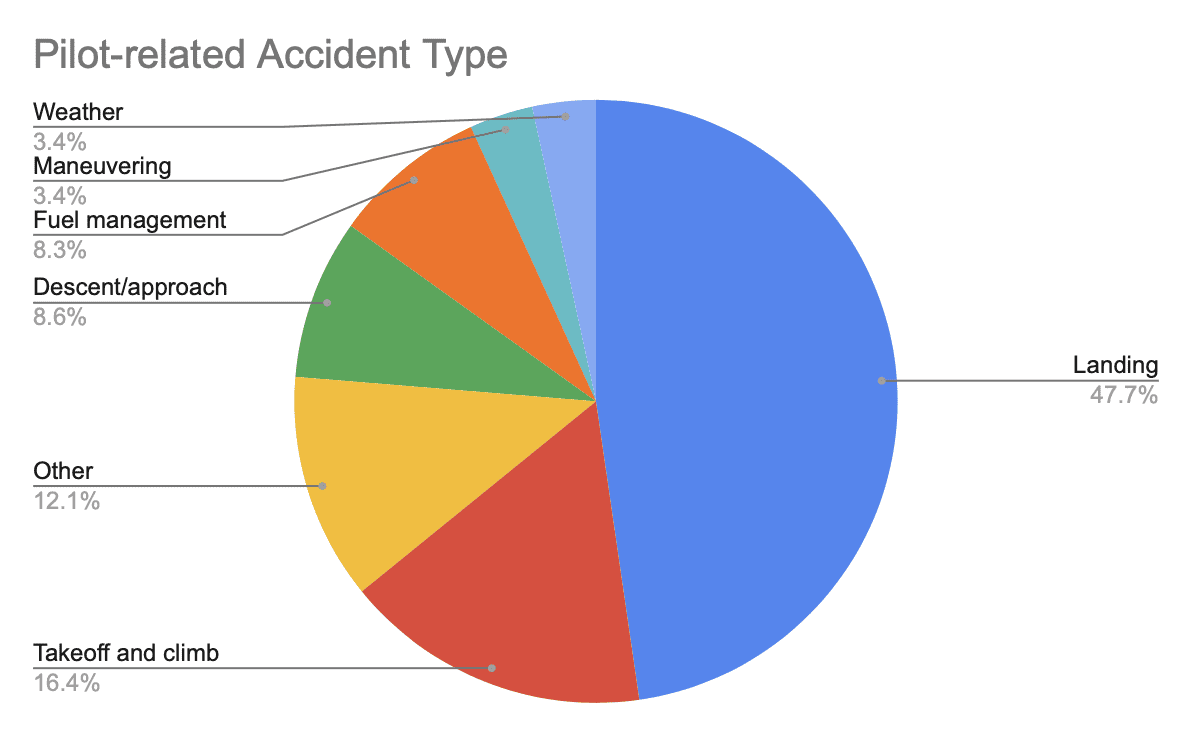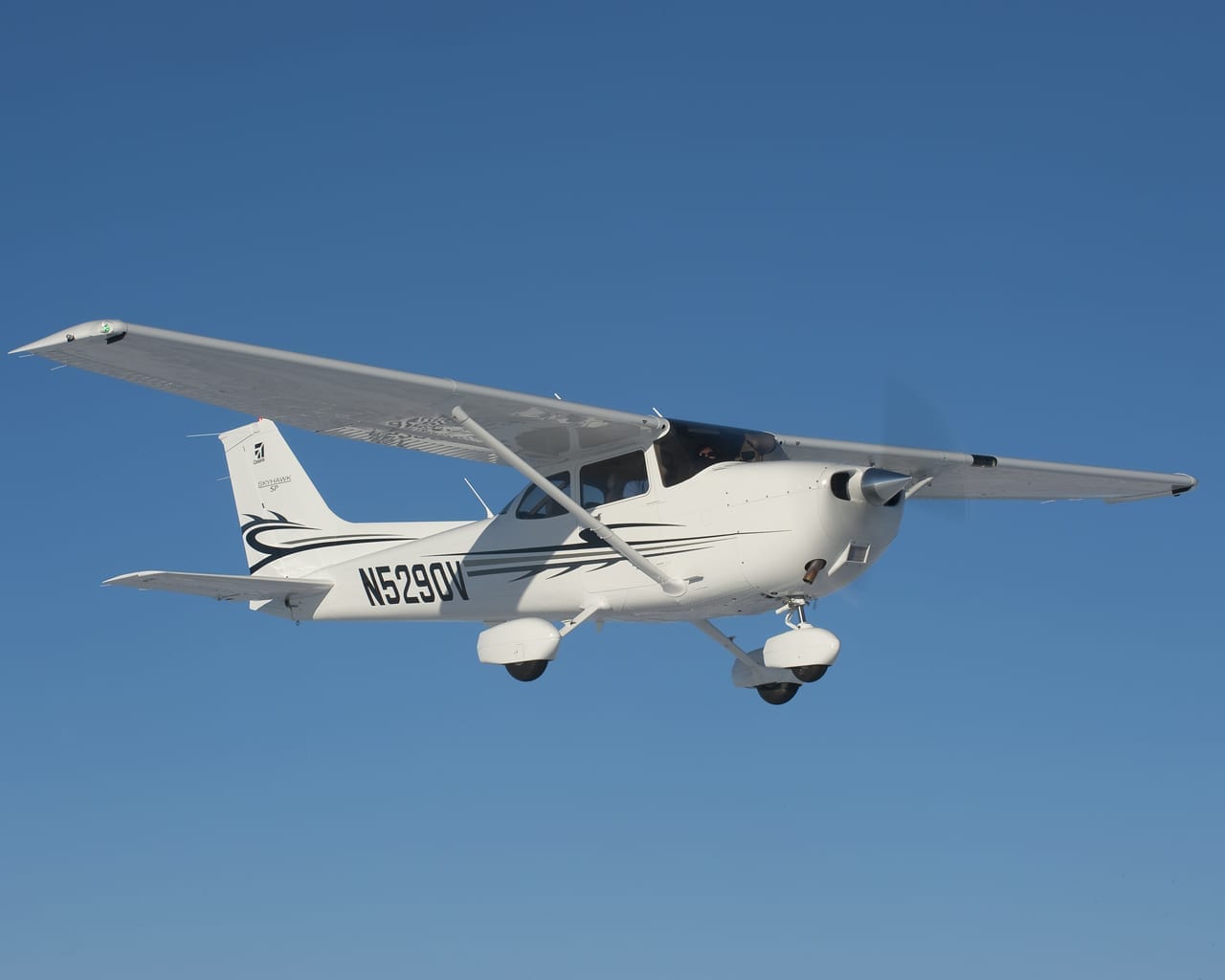
The datalink weather revolution: safer and less stressful flights
John's blogI put the iPad down after a few minutes and said to the other pilot flying with me, “we’ll just keep going and see how that line develops when we get closer.” I suspect that’s a common phrase for many Air Facts readers who fly cross countries—and indeed, this was just another day at the office—but that doesn’t make it any less miraculous. Quite simply, datalink weather has changed how we fly.

It’s time to reform Obstacle Departure Procedures
John's blogWhat’s the most overlooked and misunderstood part of IFR flying? I nominate the obstacle departure procedure (ODP). While almost any instrument pilot can recite trivia like holding pattern entries or VOR test requirements—important but relatively rare procedures—many are quite shaky on ODPs. That’s a shame, because ignorance of this procedure can be fatal.

General aviation trends in charts—2021 update
John's blogFour years ago, I tried to capture the state of general aviation in 12 charts, covering everything from new airplane shipments to fatal accident rates. An industry as varied as general aviation cannot be summed up in a few charts, but sometimes graphics tell the story better than thousands of words. Many things have changed since 2017—some for the better—so I thought it was time for an update.

The right pilot mindset: realistic, not conservative
John's blogYou’ve heard the cliche: flying isn’t dangerous, it’s just unforgiving. The unforgiving nature of aviation has serious consequences, which we should remember every time we sit in the left seat. The stakes are simply higher than in almost any other part of life, so our day-to-day risk management tools are not enough.

Sustainable aviation and the trouble with high performance airplanes
John's blogFor many environmental activists, politicians, and even public company CEOs, the goal is not to limit the damage but to achieve net zero emissions. This campaign is starting to achieve real results: the European Union is expected to ban internal combustion engines in new cars by 2035. So whether you think climate change is an existential threat or a hoax doesn’t really matter—it is a serious issue for the aviation industry, at least from a public relations standpoint.

Rethinking light airplane limits
John's blogThere are rumblings of an important announcement this summer, perhaps at Oshkosh. The headline is a new group of airplanes, somewhere between an LSA and a traditional Part 23 airplane, to be called Light Personal Aircraft (LPA). This would offer a major boost in performance, including higher gross weight, more powerful engines (perhaps up to 200 hp), and the option for retractable gear.

What if flying cars are just a bad idea?
John's blogBillions of dollars have been invested in flying car startups over the past decade, and if the press releases are to be believed, tilt-rotor aircraft will soon be a reality in American cities. But I’m increasingly convinced that Americans don’t actually want a flying car in the first place. Maybe the problem isn’t the technology, but the product-market fit, to use the popular venture capital term.

Ten years of Air Facts
John's blogTen years is a long time on the internet, so the fact that Air Facts has survived is an achievement, but it’s done much more than that—it has thrived, and grown into its own bustling community. In fact, it has succeeded beyond my wildest dreams, with over 1 million visitors last year from all around the world. Even more satisfying are the 1,900 articles we have published since 2011, written by 760 different writers.

Do we want flying to be hard or easy?
John's blogEarning a pilot certificate is one of the most difficult things you can do as a hobby. While technology has made many activities easier these days, pilots still have to learn about magnetos and Morse code, bank angle and Bernoulli. For some aviation boosters, that’s a problem; for others, it’s an opportunity.

What I learned about flying in 2020
John's blogThe end of the year may be a magical time for personal reflection, but my latest trip down memory lane was caused by something much more prosaic: filling out my annual insurance renewal form. Besides a feeling of gratitude for the hours I logged this year—and a burning desire to reschedule some canceled trips in 2021—I came away with a few lessons learned. None of these are exactly revolutionary, but at least a few were surprising to me.

GA safety trends: what should we worry about?
John's blogFAA regulations are written in blood, according to the cliche, but it doesn’t seem like flight training reacts to accidents quite so consistently. That’s a mistake. While being a good pilot means more than just avoiding an accident, that goal is certainly a good place to start. That mindset is what makes accident statistics so valuable for general aviation, and the recently released Nall Report from the AOPA Air Safety Institute is a gold mine.

Stop calling it the impossible turn
John's blogPilots love a good debate, and some topics seem to come in and out of fashion like bell bottoms. Right now the wars over lean of peak and angle of attack indicators have cooled (thankfully), but the war over “the impossible turn” seems to be heating up. In the last few months I’ve seen multiple articles, videos, and forum threads on the subject. It’s fun to debate, but what problem are we trying to solve here?

Are pilots rediscovering how to travel by light airplane?
John's blogBy long standing tradition, baseball players never talk to a pitcher in the middle of a perfect game—if everything is going well, why jinx it? The same mindset applies to pilots, who are often hesitant to acknowledge good news for fear of chasing it away. I’m going to violate that unwritten rule because I think it’s worth exploring an interesting development: general aviation is doing surprisingly well during the coronavirus pandemic.

Five airplanes every pilot should fly
John's blogWhile all airplanes have stories to tell, some are more important and more interesting than others. Here are five I believe should be in every pilot’s logbook or on their to-do list. These aren’t necessarily the best or most exciting airplanes ever to take to the skies, but they define specific ages in general aviation and make up the rich history of our industry. Call it the general aviation canon.

What pilots can teach the world about managing risk
John's blogWhen talk around the dinner table turns to Covid-19 these days, I find myself increasingly using the language of risk management, as if I were evaluating a tricky go/no-go decision in an airplane. I’m certainly not suggesting pilots are experts on infectious diseases, but I do believe the lessons learned by the aviation industry over the last 50 years have something to offer as we all think about life in a world of risk.

What will general aviation look like after COVID-19?
John's blogMaking predictions about COVID-19 is a fool’s errand right now, with a year’s worth of news happening in a week. But that doesn’t mean we can’t think in broad outlines about the future of flying. I’m obviously biased because I love light airplanes and the freedom they offer, but I genuinely believe general aviation will come out of this crisis stronger. This isn’t just wishful thinking; there are reasons to be optimistic.

Light Sport Aircraft aren’t selling well, but the LSA rule has still worked
John's blogTime to update an old debate: have Light Sport Aircraft (LSAs) taken off in popularity over the last five years? Are Sport Pilot certificates more common now that the economy is stronger? At the risk of provoking another argument, my review of the data suggests no. The Light Sport world is still alive, but it’s a niche industry with few real winners. But there is a silver lining.

More travel, less tourism – how aviation can take us beyond the guidebook
John's blogI’m not big on New Year’s resolutions, but if I had to commit to one for 2020 it would be to spend more time traveling and less time as a tourist. That might sound like a distinction without a difference, but I believe the change in mindset is profound—especially for a pilot.

The discipline to say no
John's blogThe most famous decision pilots make happens before we even get airborne: to go or not to go? But after a busy summer of flying, I have learned that this is actually one of the easiest decisions in aviation. Saying “no” may be stressful when you’re on the ground, desperate to fly, but it’s much harder once you’re in the air. Call it plan continuation bias or get-there-itis; whatever the name, it is a worthy opponent.

Thunderstorms and ATC – how to get from A to B when direct isn’t an option
John's blogThe good news is technology like datalink weather has made it a lot easier to manage convective weather. With ADS-B on my iPad or SiriusXM on my panel, it’s fairly simple to avoid the worst weather; it just takes patience and discipline to go all the way around it. Since most of my cross country flights are IFR, those long deviations require a lot of coordination with Air Traffic Control.
